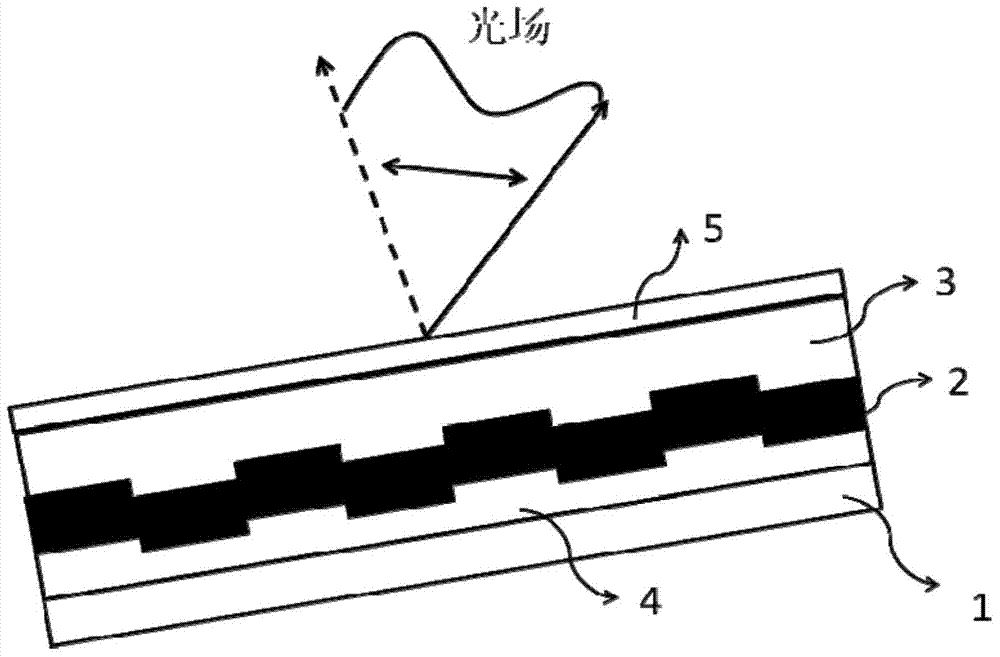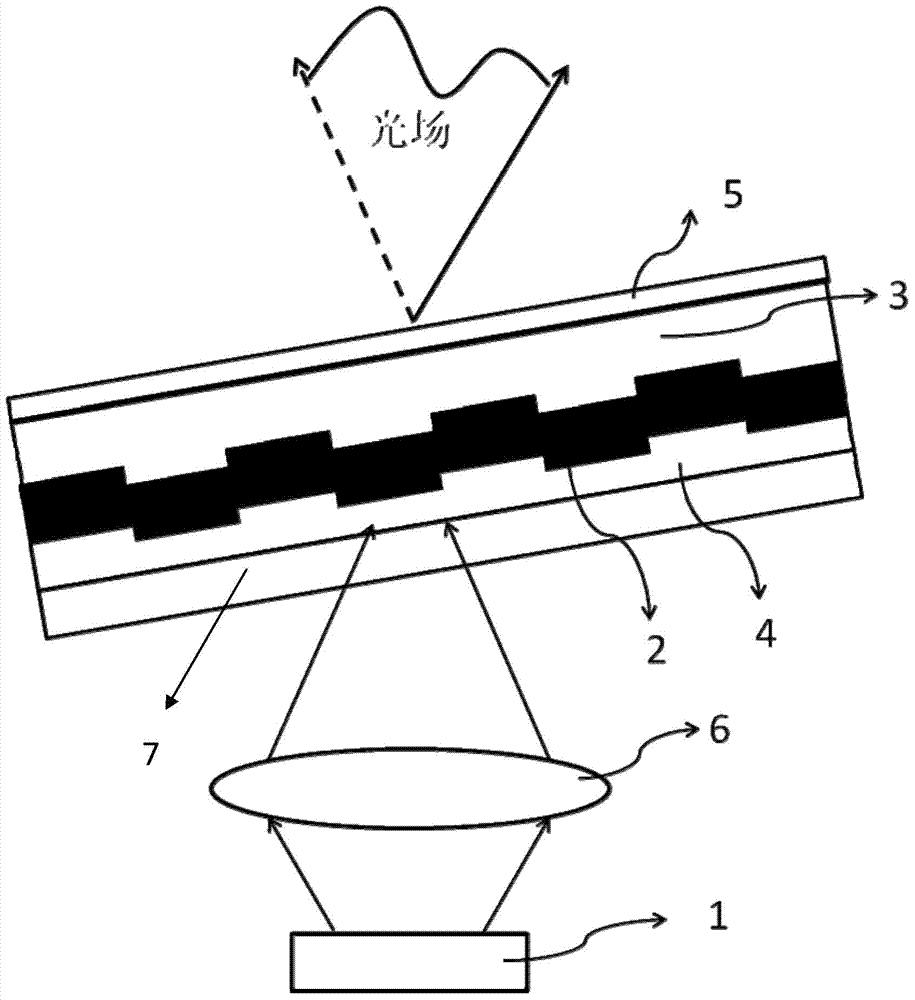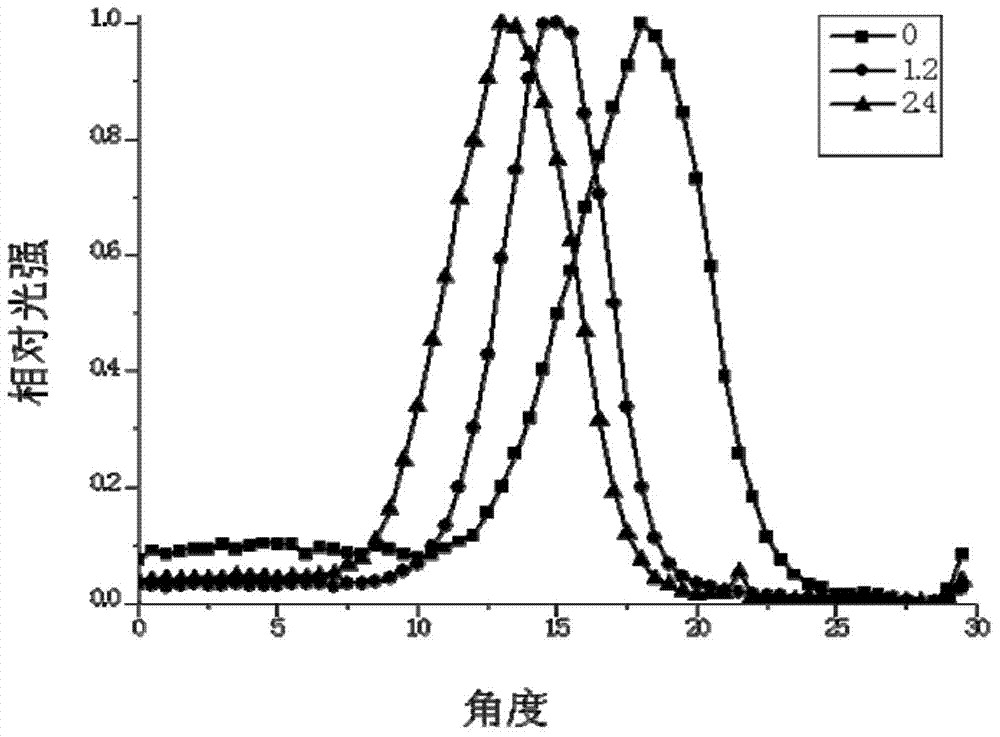Light emission angle modulation device for three-dimensional displayer pixels
A technology of emission angle and light source, applied in the direction of instruments, optics, optical components, etc., can solve the problem that the pixel cannot freely control the direction of light emission, etc., and achieve the effect of simple structure, easy industrialization, and good compatibility
- Summary
- Abstract
- Description
- Claims
- Application Information
AI Technical Summary
Problems solved by technology
Method used
Image
Examples
Embodiment 1
[0019] Embodiment 1: Structure of a light emission angle modulation device excited by a planar light source and modulated by surface plasmons.
[0020] like figure 1 As shown, 1 is a planar light source, and a light-emitting diode (LED) is used here with an emission wavelength of 630nm. 2 is a noble metal thin film with a nano-periodic structure, here is a thin film with a silver grating nano-periodic structure, prepared by the template method (obtained by vacuum-depositing a silver film on the strip structure on a Blu-ray disc), with a thickness of 100nm. On the upper and lower sides of the film, there are rectangular grating nano-period structures with a period of 320nm (the width of the strips is 160nm, and the spacing of the strips is 160nm) and the height is 15nm. 3 is the liquid crystal layer, here is a nematic liquid crystal (the TEB50 general-purpose liquid crystal of Hebei Chengzhi Yonghua Company), the thickness of the liquid crystal layer is 50 microns, and the ref...
Embodiment 2
[0024] Embodiment 2: Light emission angle modulation device structure for surface plasmon modulation by focused beam illumination.
[0025] like figure 2 As shown, the difference between this embodiment and embodiment 1 is that the optical lens 6 is used to focus the monochromatic light emitted by the planar light source 1 (same as embodiment 1) onto the silver grating nano-periodic structure film 2, and the rest of the structure is the same. Since the light beam is focused, the incident angle of the silver grating nano-periodic structure thin film 2 ranges from about 0 to 30 degrees, instead of approximately -90 degrees to 90 degrees in Embodiment 1. In this way, the utilization rate of light energy is improved, and the light spots emitted by the negative level can be eliminated. But the structure is more complex than Example 1.
[0026] Fig. 5 is a photo of the light field distribution of the structure described in this embodiment under different electric field intensitie...
PUM
 Login to View More
Login to View More Abstract
Description
Claims
Application Information
 Login to View More
Login to View More - R&D
- Intellectual Property
- Life Sciences
- Materials
- Tech Scout
- Unparalleled Data Quality
- Higher Quality Content
- 60% Fewer Hallucinations
Browse by: Latest US Patents, China's latest patents, Technical Efficacy Thesaurus, Application Domain, Technology Topic, Popular Technical Reports.
© 2025 PatSnap. All rights reserved.Legal|Privacy policy|Modern Slavery Act Transparency Statement|Sitemap|About US| Contact US: help@patsnap.com



